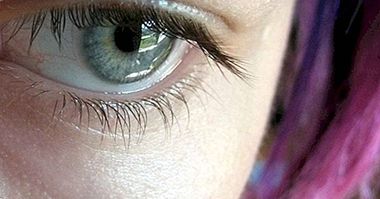Ohtahara syndrome: causes, symptoms and treatment
During infancy, especially after birth or during the gestation period, it is relatively frequent that neurological diseases result from genetic imbalances or alterations during this delicate phase of life. This is what happens, for example, with an epileptic type pathology known as Ohtahara syndrome .
In this article we will see what are the causes, symptoms and treatments associated with this epileptic encephalopathy.
- Related article: "Types of epilepsies: causes, symptoms and characteristics"
What is Ohtahara syndrome?
Early infantile epileptic encephalopathy, also known as Ohtahara syndrome, is a type of epilepsy that is very early; Specifically, it appears in babies a few months old, many times before the first trimester after delivery, or even before birth, in the prenatal stage.
Despite the fact that epilepsy is a relatively common neurological disease, Ohtahara syndrome is a rare disease, and it is estimated that it accounts for less than 4% of cases of childhood epilepsy (although its appearance is not distributed homogeneously, since which affects children more than girls).
symptom
The symptoms of Ohtahara syndrome are associated with alterations linked to epileptic seizures . These crises tend to be tonic (ie, intense, with a state of muscular rigidity that almost always involves falling to the ground and loss of knowledge) and rarely myoclonic (ie, short states of muscle stiffness and often being the crisis so little significant that it can go unnoticed).
In the case of myoclonic seizures, periods of muscular rigidity usually last about 10 seconds, and appear both in the waking state and during sleep.
On the other hand, depending on the areas of the brain that are affected by their functioning, these crises can be focal or generalized.
Other related symptoms are apnea and difficulties in swallowing and breathing.
- You may be interested: "What happens in a person's brain when they have seizures?"
Diagnosis
Being such a rare disease, there is no specific tool for diagnosis, and this is borne by the experience of the medical team. To do this, neurologists and psychiatrists use neuroimaging and scanning technology for nerve activity, such as Computerized Tomography or the Encephalogram, which reveals a characteristic activation pattern with very marked peaks of activity followed by periods of great calm.
This lack of specific tools means that death often occurs before knowing clearly what type of epilepsy is involved, and that sometimes there may be no consensus on the type of disease that exists.
Causes of Ohtahara syndrome
As with all types of epilepsy in general, the causes of Ohtahara syndrome are relatively unknown. The strange pattern of neuronal activation that occurs in the nerve cells of the brain is known from its origin, but it is not known what causes this pattern of electrical firing of the neurons to appear and begin to spread throughout the rest of the nervous system.
If we take into account other health problems that can precipitate the onset of these epileptic seizures, it is known that metabolic disorders, the presence of tumors, heart attacks, malformations in the nervous system and certain genetic abnormalities have also been associated with this disease.
Treatments
The forms of medical treatment used to intervene in cases of children with Ohtahara syndrome are usually based on administering drugs commonly used to alleviate the symptoms of other types of epilepsy, such as clonazepam or phenobarbital.
On the other hand, interventions based on changes in diet (such as for example with ketherogenic diets) have also been used, although with very little success. In general, the evolution of the disease does not improve, and epileptic seizures become more frequent and intense.
In extreme cases, surgery can be used, as is done in other types of epilepsies, although at such early ages these interventions tend to be very complicated.
Forecast
On the other hand, this is a disease with poor prognosis , and most cases end in early death during early childhood, as the disease tends to get worse. Even though during the first sessions the treatment seems to make the course of the syndrome improve, later its effectiveness tends to be more moderate.
In addition, Ohtahara syndrome may cause others to appear health problems related to the effect of epileptic seizures have on the organism, such as mental retardation, respiratory problems, etc. This means that even in children over the first year of life they are left with a certain type of disability to which they must be able to adapt.
It will be necessary to trust the progress of research in this type of neurological diseases to develop the prevention, diagnosis and treatment tools necessary for Ohtahara syndrome to stop being a serious health problem.



















